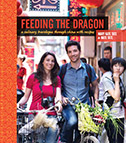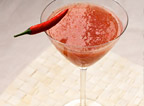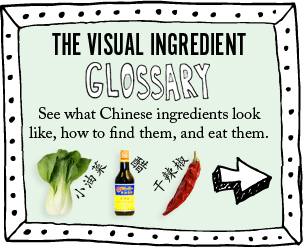MSG 味精 (wèi jīng)
Also known as monosodium glutamate, this seasoning has gained a bad reputation in the West. It is a naturally occurring amino acid that is found in many vegetables, especially in seaweed. It doesn’t really have a flavor of its own, but when it is added to a dish it brings out a dish’s umami flavor. Umami is sometimes referred to as the “fifth taste” and is a cross between a salty and a sweet flavor. In China, MSG is sometimes added with a heavy hand, which can make dishes tend to taste all the same, but when used sparingly, it does wonders for flavor. We don’t cook with MSG, but if you want to, you can find it at any Asian grocery store. It is a white powder that looks similar to salt and is usually sold in bags. Chances are you already eat MSG every day. It is a flavoring ingredient in most salad dressings, bagged chips, canned broths, and fast food.









 Tuesday, January 11, 2011
Tuesday, January 11, 2011